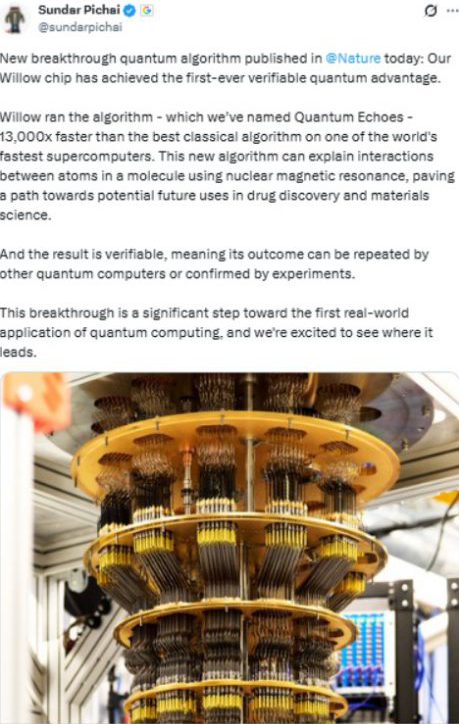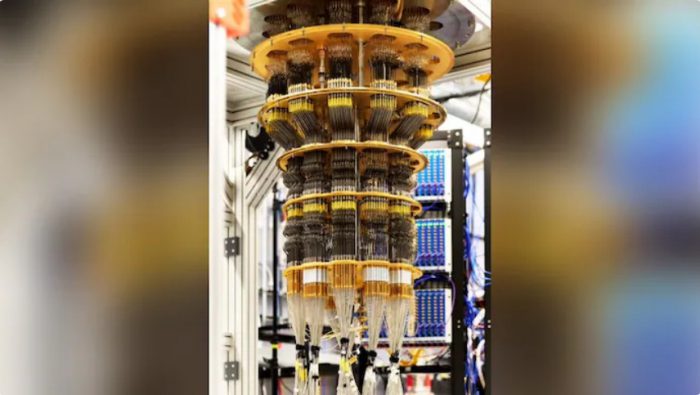Google’s 105-qubit Willow processor achieves the world’s first verifiable quantum advantage, running a new algorithm 13,000× faster than top supercomputers — ushering in the dawn of practical quantum computing.
In a landmark scientific breakthrough, Google Quantum AI has announced that its Willow quantum processor has achieved the world’s first verifiable quantum advantage — a feat officially published in Nature on October 22, 2025.
The accomplishment is driven by a revolutionary algorithm called Quantum Echoes, which executes complex quantum interactions 13,000 times faster than one of Earth’s most advanced classical supercomputers — setting a new frontier in computational speed and accuracy.
Google CEO Sundar Pichai celebrated the milestone on X, calling it “a step toward real-world quantum applications.”
“Our Willow chip has achieved the first-ever verifiable quantum advantage,” Pichai wrote. “This new algorithm can explain interactions between atoms in a molecule using nuclear magnetic resonance — paving the path toward future uses in drug discovery and materials science.”

Unlike earlier “quantum supremacy” demonstrations, Quantum Echoes delivers verifiable results — meaning other quantum systems can replicate or confirm them through experimental validation. Google’s Quantum AI team emphasized that the algorithm computes an “Out-of-Time-Ordered Correlator,” a quantum measurement essential for modeling atomic and molecular behaviour with unprecedented precision.
The Willow chip, boasting 105 high-fidelity qubits, not only outpaces classical computing but also showcases a new era of hardware-based reliability. This is the first algorithm to demonstrate verifiable quantum advantage on physical hardware — moving beyond simulation to real-world, reproducible data.
The Nature publication and Google’s accompanying video presentation suggest this moment could mark the turning point when quantum computing leaves the laboratory and enters applied science. If successfully replicated, Quantum Echoes could ignite breakthroughs across pharmaceutical design, materials engineering, and molecular chemistry, where predicting atomic interactions could cut years and billions of dollars from research cycles.
As the global tech race in quantum innovation intensifies — from IBM and Intel to Chinese state labs — Google’s verifiable result reclaims leadership in the quantum frontier it first ignited with 2019’s Sycamore experiment. But this time, it’s not just supremacy — it’s proof.




